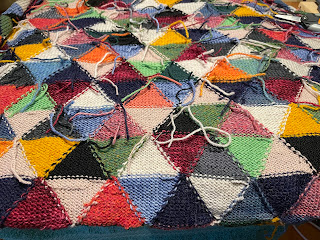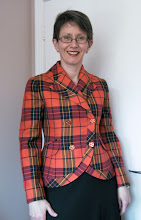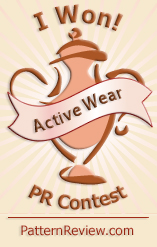It's a few days after the wedding - of my only son to his long-time sweetie - who wore the dress I made for her. Actually, she wore both dresses that I made - the "practice dress" (she changed for the reception) and the "real thing". So I am giving myself full marks for client satisfaction.
I am still processing the whole experience. But you only want to know about the sewing, right?
Initially, when I signed up for this project after finding out that future DIL was going to be 30 weeks pregnant on her wedding day, we were thinking that an easy to wear knit dress would possibly work. I made a number of inquiries and found out that The Fabric Room had white silk jersey in stock. So that's why we went there. Also (confession) I had wanted to visit this store for many years and had never had an opportunity or an excuse to do so.
Of course, the jersey wasn't quite right, but we found this interesting silk-viscose blend, very drapey but with a bit of body. Up close, it is almost a tiny mesh and I would say it is semi-sheer. It would clearly need to be lined and initially we thought a coloured China silk could work. We bought some pretty red fabric. But to be safe, we also bought some fine white cotton batiste, which ended up in the lining of this dress.
I'll make her something else out of the many metres of red silk!
To make this dress a bit more fancy, I used a tiny remnant of silk (Shantung? - from a friend's stash) for the bodice insert, topped by a pretty lace (from the same friend's stash) applied to a skin-tone mesh. There is also a band of lace on the "waist" band.
I didn't even try to pad my dress form for the baby bump, as you can see.
I decided to use the same cotton/lycra knit fabric as in the practice dress as the underlayer for the bodice front. Because I was confident about the pattern (thank you practice dress) I thought I could construct the bodice in a more straightforward way.
However, this dress is both lined and partly underlined, which put all the complexity back into the sewing procedure.
I underlined the back bodice and the waistband with silk organza from stash. This added stability to the dress fabric in areas that would be stressed due to close fit.
The entire dress, except the bodice front, is lined with cotton batiste. At DIL's request, I again made in-seam pockets, which I cut out of the cotton and inserted through an opening in the lining so that they ended up on the inside of the lining. If left between the fashion fabric and lining, they would have showed through.
I had initially sewn exactly the same dimensions as the practice dress and had inserted some 2.5cm elastic in the front of the waistband. On a fitting a few weeks before the wedding, it was obvious I needed to let it out as much as possible, and the elastic was deemed uncomfortable. Out it came! (Her wish was my command.)
My last technical challenge was the hem. I had added height to the front panels as well as width, but based on my experience with the practice dress I had cut all panels about 8cm shorter than the pattern. DIL was planning to wear flat shoes and the skirt was just too long.
However, as a result of a combination of factors (very shifty fabric and the growing baby bump being the most important), when I finally had the opportunity to figure out the hem, I found I had only about 2cm to turn up in front and close to 10cm in the back. I was hemming this dress in the few days before the wedding at my mom's place, having brought a sewing machine, my serger and a good iron as well as all the tools I could imagine using. Luckily I had also thrown in the remainder of the fashion fabric.
My hem solution was to tear 10cm wide strips of the fabric and use them to face the hem. If I do say so myself, this worked brilliantly (although it took me an entire day).

This view is perfect to illustrate the back (back neck lowered a bit) and show that the hem has real heft and is quite even. I was very relieved to see this, I can tell you!
This ends the saga of the dress, but not all the wedding-related sewing.
DIL had asked for a bib if there was fabric left over (there was!), explaining she was worried about the dress during the dinner. I didn't think it was fair for her to be the only one, so I made a bib for the groom as well. I found a free pattern on the internet. The bibs are structured due to a lining of the batiste fused to light batting. I decorated them with silk organza and a couple of buttons and they close with velcro. I think they turned out really cute.
Not sure what I'm going to make next but it might be for a small human.












.png)




































.jpg)




